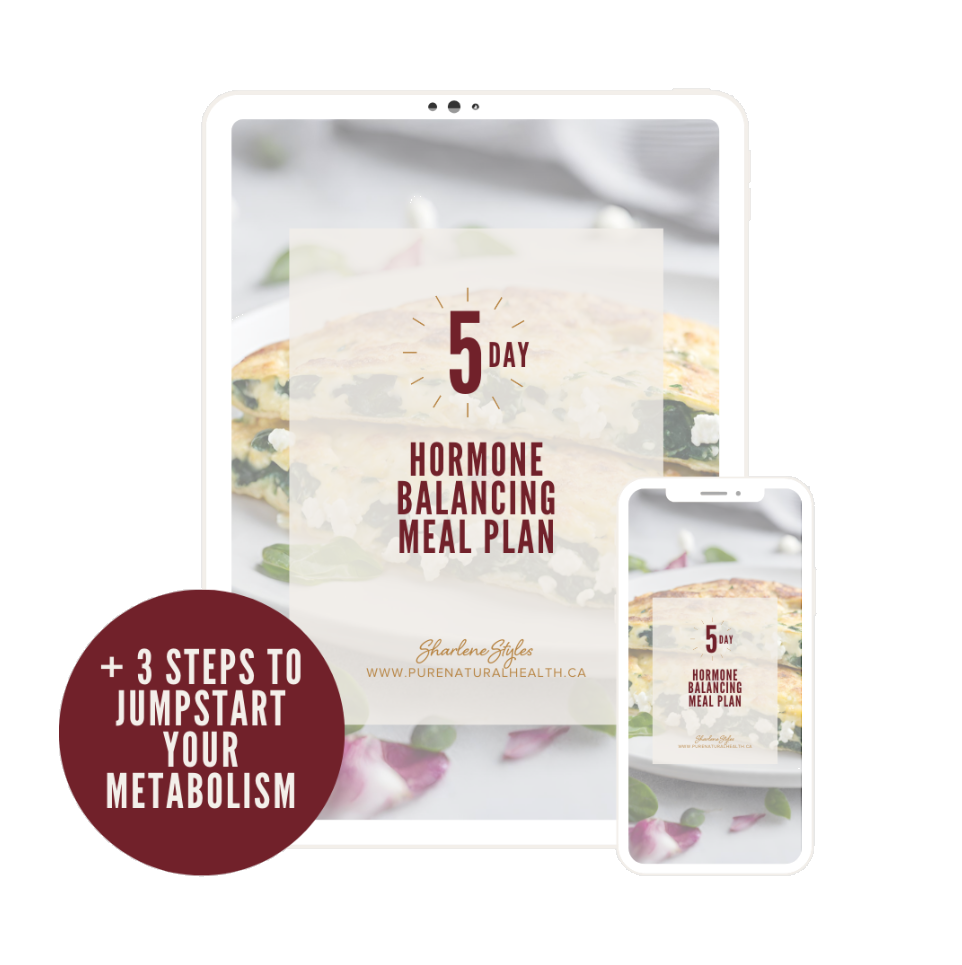If you’re in midlife and feeling stuck on your weight loss journey, you’re not alone.
What Causes a Midlife Weight Loss Plateau?
Answer: A midlife weight loss plateau is often caused by hormonal changes, metabolic adaptation, mineral imbalances, and chronic stress, making typical calorie-cutting strategies less effective. A holistic approach is needed to reset your metabolism.
You’ve done the diets, counted the calories, and tracked every workout, yet the scale refuses to budge. Frustrating, right? Here’s the thing: what worked in your 20s and 30s may no longer be the solution now. In midlife, our bodies are navigating a perfect storm of hormonal shifts, changing metabolism, and deeper nutritional needs. It’s not just about cutting calories anymore; it’s about understanding why your body is holding on to weight and what it actually needs to feel safe and supported.
The truth is, weight loss resistance in midlife often has less to do with how much you’re eating and more to do with factors like mineral imbalances, metabolic adaptation, hormonal fluctuations, and even mindset barriers. If you’re curious about balancing hormones naturally, check out our guide on 5-Day Meal Plan and Hormone Jumpstart Guide to kickstart your metabolism and balance your hormones naturally. In this blog post, we’ll explore a holistic approach that goes beyond the standard adv. In this blog post, we’ll explore a holistic approach that goes beyond the standard advice and dives into the deeper, often overlooked reasons for weight plateaus in midlife women.
So if you’re ready to stop the blame game, ditch the calorie counting, and learn what’s really going on, let’s break through that stubborn plateau together!
Mindset and Stress Resilience
Mindset is a huge, often underestimated factor in midlife weight loss plateaus. By this stage, many women have tried various diets, and the fear of “nothing working” can actually be a self-fulfilling prophecy. Here’s how mindset can get in the way:
- Chronic Dieting Mentality: Many women have spent decades dieting, which can create a pattern of restrictive thinking. This often leads to stress around food, and stress raises cortisol levels, which can stall weight loss.
- Fixed Beliefs About Aging: The belief that midlife weight gain is inevitable or that metabolism is permanently “broken” can impact your actions and choices. Shifting this mindset to embrace self-compassion and curiosity can open new pathways for change.
- Mindful Eating Practices: Instead of focusing solely on food quantity or quality, try eating without distractions, paying attention to hunger cues, and listening to your body’s satiety signals. Mindfulness reduces stress hormones and can break through stubborn plateaus.
Mineral Balance: The Missing Link
Testing and balancing minerals can be a game changer, especially if you’ve ruled out calories as the main issue. Hormonal shifts during midlife change how our bodies utilize and need minerals, which can impact metabolism, thyroid function, and stress response.
- Magnesium: Many women in midlife are deficient in magnesium, which is essential for over 300 biochemical reactions in the body. It helps with insulin sensitivity, reduces inflammation, and supports healthy sleep patterns. Magnesium deficiency can exacerbate stress and impact fat storage, especially around the midsection.
- Zinc and Copper Balance: This mineral duo impacts thyroid function and estrogen metabolism. Too much copper relative to zinc can increase anxiety and estrogen dominance, which can lead to weight gain or make it hard to lose stubborn fat.
- Sodium and Potassium: If you’ve been on a low-sodium diet or tend to avoid salt, it’s worth reconsidering. Sodium and potassium work together to support adrenal health, hydration, and electrolyte balance. The adrenals play a key role in stress response, and an imbalance here can lead to fatigue and disrupted metabolism.
- Calcium and Magnesium Balance: Many women focus on calcium, but without adequate magnesium, calcium can be deposited in tissues rather than utilized properly, leading to inflammation. This balance is crucial for nerve function, muscle contraction, and sleep quality—all of which impact metabolism.
Consider Testing: Hair tissue mineral analysis (HTMA) or functional medicine tests can give you a clearer picture of what’s happening at the cellular level. Balancing minerals often leads to better hormonal health and improved metabolic function.
Hormonal Shifts and Thyroid Function
Weight loss resistance in midlife is often tied to changes in thyroid and sex hormones. It’s common to see shifts in estrogen, progesterone, testosterone, and thyroid hormones, which all play a role in metabolism.
- Estrogen Dominance: As progesterone drops faster than estrogen during perimenopause, the resulting imbalance can lead to weight gain, especially around the hips and thighs. Addressing estrogen dominance through liver support (think cruciferous veggies, dandelion root, and fiber) can help.
- Thyroid Slowdown: The thyroid is extremely sensitive to stress, nutrient deficiencies, and hormonal imbalances. Symptoms like fatigue, hair loss, and cold hands/feet often accompany a thyroid slowdown. Selenium and iodine support, along with stress management, can help revitalize thyroid function.
Metabolic Adaptation: It’s Not Just About Calories
In midlife, the body’s metabolic rate may shift due to changes in muscle mass, hormonal signaling, and adaptive thermogenesis (the body’s way of conserving energy during perceived “famine” or prolonged dieting).
- Increase Protein Intake: Protein needs often increase in midlife, not decrease. More protein supports muscle maintenance and promotes satiety, which can help overcome adaptive thermogenesis.
- Cycle Your Calories: Instead of maintaining a constant calorie deficit, try a “reverse dieting” approach where you gradually increase your calorie intake. This can reset your metabolism and signal to your body that it’s safe to release stored fat.
The Role of Insulin and Blood Sugar Balance
Blood sugar dysregulation is a sneaky player in midlife weight plateaus. Even if you don’t have overt insulin resistance, hormonal shifts can make you more sensitive to blood sugar swings.
- Focus on Balanced Meals: Combine protein, healthy fats, and fiber with every meal to stabilize blood sugar. Avoid eating carbs alone, as they can spike insulin and lead to energy crashes.
- Time-Restricted Eating: If you haven’t tried intermittent fasting, this may be the time. A 12-14 hour overnight fast (e.g., finishing dinner by 7 p.m. and eating breakfast at 9 a.m.) can help improve insulin sensitivity and give your digestive system a rest.
Adjust Your Exercise Routine
Exercise can help break a plateau, but the type of exercise matters. High-intensity cardio alone can sometimes worsen the problem by raising cortisol levels.
- Incorporate Strength Training: Muscle mass declines with age, which impacts your metabolic rate. Lifting weights or doing resistance exercises 2-3 times a week can help rebuild muscle and increase metabolism.
- Prioritize Recovery: Overtraining is a common issue that raises cortisol and impedes weight loss. Ensure you’re allowing time for recovery with activities like yoga, walking, and adequate sleep.
Final Thoughts
A midlife weight loss plateau isn’t a sign that your body is broken; it’s a signal that it needs something different. A multi-faceted approach that looks at mindset, mineral balance, hormone health, and metabolic flexibility can help you tune into what your body needs right now. By embracing this phase as an opportunity for deeper understanding and holistic self-care, you’ll not only break through the plateau but also create lasting, sustainable health changes.
So, now that we’ve uncovered why your weight loss journey might be stalling, it’s time to shift gears and focus on how to overcome it. Instead of relying on restrictive diets or exhausting workouts, let’s explore a holistic toolkit of remedies and strategies designed specifically for midlife women. These approaches go beyond quick fixes and dive deep into what your body truly needs at this stage of life.
Effective Holistic Remedies for Midlife Weight Loss Resistance
1. Mindset and Stress Resilience: Reframe Your Weight Loss Journey
Mindset is a key factor in moving past a plateau. Here are a few techniques:
Exercise: The Growth Mindset Journal
- Each morning, write down one positive belief about your body and health, such as: “My body is capable of change, and I am learning what it needs.”
- End the day by journaling one small victory, whether it’s drinking more water, making a healthy meal choice, or noticing how you managed stress better. This practice shifts your focus from frustration to progress and builds resilience.
Recommendation: Mindful Eating
- Before each meal, take three deep breaths and pause. Check in with your hunger levels, emotions, and environment. This simple practice helps reduce stress hormones like cortisol, which can inhibit fat loss.
- Eat slowly and savor each bite, focusing on texture, taste, and smell. It takes about 20 minutes for your brain to register fullness, so slowing down can prevent overeating and help you tune into your body’s natural signals.
2. Mineral Balancing: Nourish Your Metabolism
Testing and balancing minerals can be a game changer, especially if you’ve hit a plateau despite eating well and exercising.
Exercise: Try a Magnesium Foot Soak
- Add 1-2 cups of Epsom salts (magnesium sulfate) to a warm foot bath and soak for 20 minutes before bed. This not only boosts magnesium levels but also helps relax your nervous system for better sleep.
- Aim to do this 2-3 times a week as part of your evening routine.
Recommendation: Include More Mineral-Rich Foods
- Increase your intake of magnesium-rich foods like leafy greens, pumpkin seeds, dark chocolate, and avocado.
- For zinc, focus on foods like oysters, grass-fed beef, pumpkin seeds, and chickpeas.
- Add a pinch of high-quality sea salt (Himalayan or Celtic) to your water for better hydration and adrenal support.
Pro Tip: If you suspect mineral imbalances, consider a hair tissue mineral analysis (HTMA) to get a personalized picture of what you might be lacking.
3. Hormone Support: Reset Your Metabolism Naturally
Hormonal fluctuations in midlife can make weight loss more challenging. Here’s how you can support your body’s natural hormone balance:
Exercise: Seed Cycling for Hormonal Balance
- For the first half of your menstrual cycle (Days 1-14), consume 1 tablespoon each of ground flax seeds and pumpkin seeds daily. These seeds support estrogen detoxification.
- For the second half of your cycle (Days 15-28), switch to ground sesame seeds and sunflower seeds, which support progesterone production.
- If you’re post-menopausal, cycle through both seed combinations every two weeks.
Recommendation: Liver Support with Daily Detox Drinks
- Start your day with warm lemon water to support liver detoxification and hormone metabolism.
- Try a simple green smoothie with dandelion greens, cucumber, and a scoop of chia seeds for fiber. This helps your body process excess estrogen, which can be a factor in weight loss resistance.
4. Optimize Your Metabolic Flexibility: Cycle Your Caloric Intake
Instead of maintaining a constant calorie deficit, which can lower your metabolic rate, try a “calorie cycling” approach:
Exercise: The 5-2 Caloric Cycling Method
- Choose two non-consecutive days per week where you eat at maintenance calories (about 200-300 more than your normal intake).
- For the remaining five days, eat in a slight deficit (10-15% below maintenance).
- This method prevents metabolic adaptation and signals to your body that it’s safe to release fat stores.
Recommendation: Protein First
- Aim to consume 20-30 grams of protein at each meal. This not only supports muscle maintenance but also increases thermogenesis (the body’s calorie-burning process).
- Focus on lean protein sources like wild-caught fish, organic poultry, and plant-based options like lentils and quinoa.
5. Balance Blood Sugar: Stabilize Insulin Levels for Fat Loss
Blood sugar fluctuations can be a hidden barrier to breaking a plateau, even if you’re eating “healthy” foods.
Exercise: 10-Minute Post-Meal Walks
- Take a brisk 10-minute walk after your main meals. This simple habit can lower post-meal blood sugar spikes and improve insulin sensitivity, making it easier for your body to access fat stores.
- Bonus: It also aids digestion and helps you decompress from the day.
Recommendation: The Power of Fiber
- Include fiber-rich foods like chia seeds, flax seeds, beans, and cruciferous vegetables in your meals to slow the absorption of sugar and reduce insulin spikes.
- Aim for at least 25-30 grams of fiber per day, spread throughout your meals.
6. Adjust Your Exercise Routine: Less Stress, More Muscle
Over-exercising or focusing too much on cardio can raise cortisol levels, which may be counterproductive. Here’s what to try instead:
Exercise: Strength Training for Hormone Health
- Incorporate weightlifting or bodyweight exercises (squats, lunges, push-ups) 2-3 times per week. Focus on compound movements that work multiple muscle groups for maximum benefit.
- Start with lighter weights and work up gradually to avoid injury and support muscle growth.
Recommendation: Prioritize Recovery and Sleep
- Add in yoga, stretching, or foam rolling sessions to balance out strength training days. This reduces muscle soreness, aids recovery, and lowers stress levels.
- Aim for 7-8 hours of sleep per night. Poor sleep can disrupt hormone levels (like cortisol and insulin) and lead to increased fat storage.
7. Support Your Liver for Better Hormonal Balance and Metabolism
In midlife, the liver has the added job of processing fluctuating hormones like estrogen, which can contribute to weight loss resistance. Giving your liver a little extra love can make a big difference.
Recommendation: Milk Thistle for Gentle Detox
- Milk thistle is a powerful herb known for its liver-supporting properties. It contains silymarin, a compound that helps protect liver cells and boost detoxification. Take it as a supplement or enjoy it as a tea. Aim for 150-300 mg per day, but consult your healthcare provider if you’re on any medications.
Exercise: Castor Oil Packs for Overnight Detox
- Apply a castor oil pack to your abdomen before bed to support liver detoxification and digestion. Here’s how:
- Soak a piece of flannel or cloth in cold-pressed castor oil.
- Place it over your liver area (right side of the abdomen, just below the rib cage).
- Cover with a plastic wrap or towel, and place a heating pad or hot water bottle on top.
- Lie down for 30-45 minutes, or leave it on overnight for deeper detox support.
- This practice improves lymphatic drainage, reduces inflammation, and supports hormonal balance.
Pro Tip: Combine your castor oil pack with deep belly breathing exercises to activate the parasympathetic nervous system, aiding stress reduction and digestion.
Final Call to Action: Tune Into Your Unique Midlife Needs
It’s time to move beyond the “eat less, move more” mentality that dominated diet culture for decades. In midlife, your body is changing, and it requires a fresh approach—one that honors your unique hormonal shifts, metabolic needs, and life experiences.
Try integrating just one or two of these strategies into your routine and pay attention to how your body responds. This phase of life isn’t about restriction; it’s about redefining your relationship with your body and learning to work with it rather than against it.
Have you experienced a midlife weight loss plateau? What strategies have worked for you? Share your thoughts in the comments below or book a free consultation for personalized guidance!





